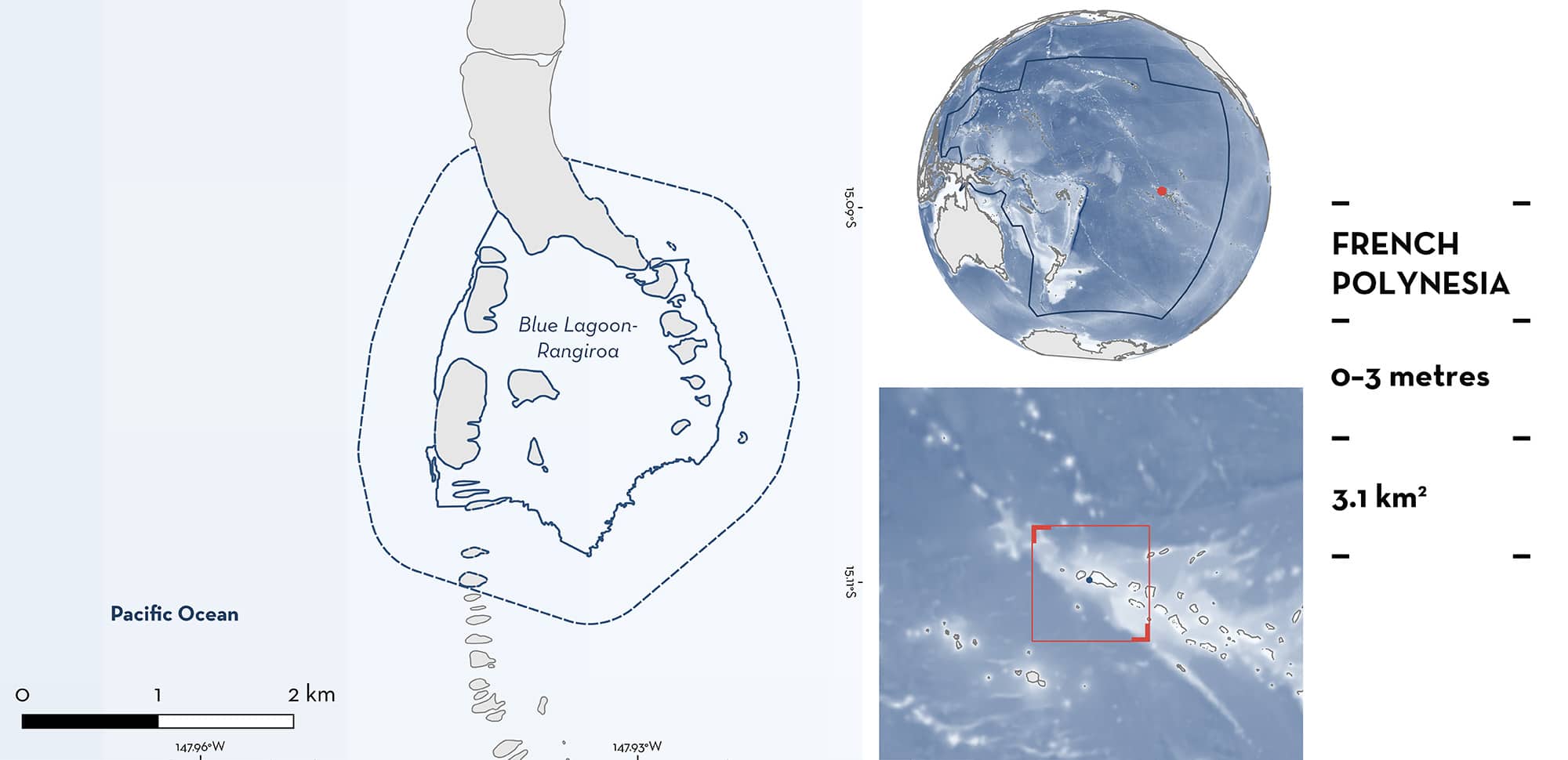ISRA FACTSHEETS
ISRA FACTSHEETS
NEW ZEALAND & PACIFIC ISLANDS REGION
Blue Lagoon-Rangiroa
Summary
Blue Lagoon-Rangiroa is located on the western side of Rangiroa Atoll in the Tuamotu Archipelago of French Polynesia. The area encompasses an inner lagoon, within the larger Rangiroa Atoll lagoon, and its encircling ring of coral reefs and small islets. Blue Lagoon-Rangiroa is characterised by sandy substrates with patches of coral reefs, seagrass beds, and shallow sandbars. Within this area there are: threatened species and reproductive areas (Blacktip Reef Shark Carcharhinus melanopterus).
Download factsheet
Blue Lagoon-Rangiroa
DESCRIPTION OF HABITAT
Blue Lagoon-Rangiroa is situated on the western side of Rangiroa Atoll in the Tuamotu Archipelago of French Polynesia. The area encompasses an inner lagoon with crystal clear waters ranging between 0–3 meters, within the larger Rangiroa Atoll lagoon, and its encircling ring of coral reefs and small islets. Blue Lagoon-Rangiroa is characterised by sandy substrates with patches of coral reefs, seagrass beds, and shallow sandbars. The islets surrounding the lagoon are covered in coconut palms and coastal shrubs. The tides in the area are semi-diurnal, with two tidal cycles per day of unequal range (mean tidal range = 0.52 m) (Kumar et al. 2019). The region is influenced by the Island Mass Effect and the easterly trade winds, experiencing two relatively distinct seasons, a wet season from December–March and a dry season from July–October (Kumar et al. 2019; Vollbrecht et al. 2021).
This Important Shark and Ray Area is benthopelagic and is delineated from inshore and surface waters (0 m) to 3 m based on the bathymetry of the area.
CRITERION A
VULNERABILITY
One Qualifying Species considered threatened with extinction according to the IUCN Red List of Threatened Species regularly occurs in the area. This is the Vulnerable Blacktip Reef Shark (Simpfendorfer et al. 2020).
CRITERION C
SUB-CRITERION C1 – REPRODUCTIVE AREAS
Blue Lagoon-Rangiroa is an important reproductive area for one shark species.
Blacktip Reef Sharks neonates are regularly seen in this area (K Burkhardt pers. obs. 2024). Between 2011–2024, photograph and video records from tourists have documented the area as an important aggregation site for neonate and young-of-the-year (YOY) Blacktip Reef Sharks. Small Blacktip Reef Sharks are seen year-round in the shallow lagoon swimming and resting with their dorsal fins out of the water (K Burkhardt pers. obs. 2024). Aggregations of an average of ~20–40 neonates and YOY are regularly observed in this area, with visual size estimates indicating individuals as small as 35 cm in total length (TL) (K Burkhardt pers. obs. 2024). The size at birth for this species is 30–52 cm TL (Ebert et al. 2021).
Blue Lagoon-Rangiroa has been used by locals as a tourism spot for >50 years, offering daily, year-round excursions to observe neonates and YOY Blacktip Reef Sharks from the beach (K Burkhardt pers. obs. 2024), confirming the importance of the area across multiple decades. Due to the shallow and sheltered characteristics of the area, Blue Lagoon-Rangiroa provides a protected environment against predators for the early life stages of Blacktip Reef Sharks.
Download factsheet
SUBMIT A REQUEST
ISRA SPATIAL LAYER REQUEST
To make a request to download the ISRA Layer in either a GIS compatible Shapefile (.shp) or Google Earth compatible Keyhole Markup Language Zipped file (.kmz) please complete the following form. We will review your request and send the download details to you. We will endeavor to send you the requested files as soon as we can. However, please note that this is not an automated process, and before requests are responded to, they undergo internal review and authorization. As such, requests normally take 5–10 working days to process.
Should you have questions about the data or process, please do not hesitate to contact us.


